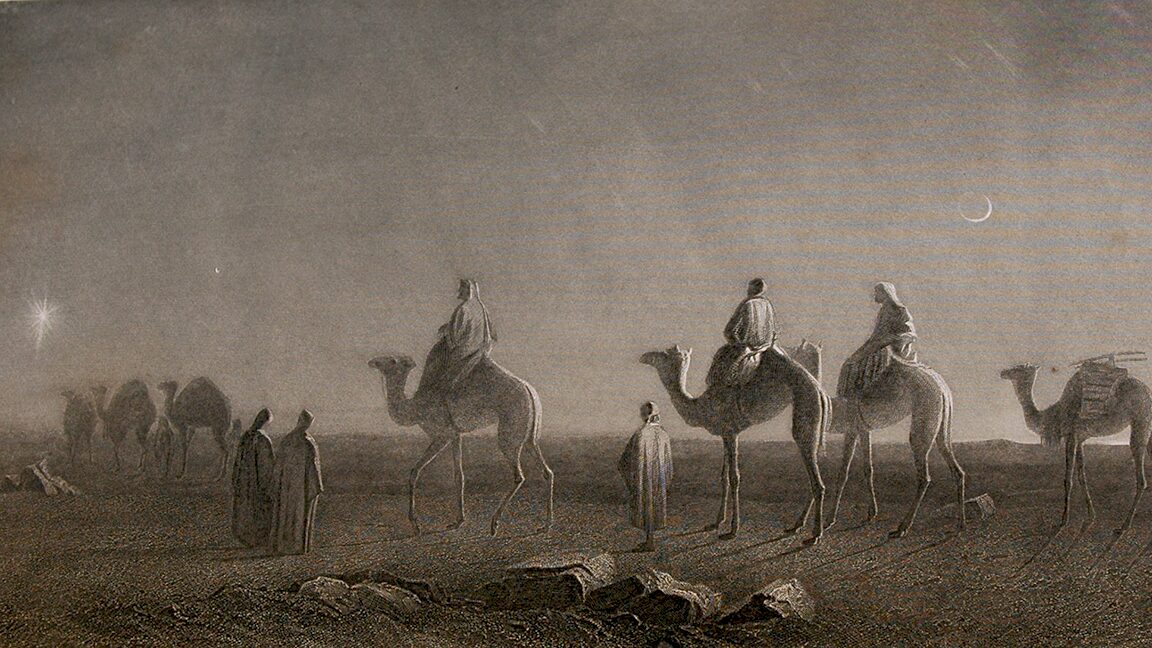Sometimes people do important things for reasons other than the obvious. I started wearing glasses in the third grade because my eyesight required it, but I have met people with 20/20 vision who wear them for reasons of fashion. That doesn’t work for me, or perhaps not you either, but let’s not judge.
So, is it possible to be a Seventh-day Adventist for reasons other than what would seem obvious? Sure. Some reasons I have heard are keeping the family together (relationships); I like the worship service/pastor/potluck (culture); I don’t know enough about any other religion (inertia).
None of those are particularly bad reasons, but I have to say that none of them would do the trick for me. Leaving would be a hard thing because it would disrupt my family and, yes, I would miss the potlucks. In my case it is also an employment matter, which, in some ways, is bigger than family or cultural concerns. But none of those factors have ever mattered enough to me to keep me in the faith. I think it is good sometimes to reflect on my honest and true reasons for being a Seventh-day Adventist, and I appreciate being asked to write this article, which takes me down that path once again.
This issue is all about things that strike at the heart of why I chose, and continue to choose, being a part of this denomination. It focuses on whether it matters on a practical level, apart from (but not necessarily unrelated to) whether I buy into our belief system. But that is where it begins: the simple fact that I believe our message, all 28 fundamental points of it, and neither my study of the Bible nor my study of other beliefs has shaken me on any of those points.
For me, and I hope for you as well, it is important that my justification for being a member goes beyond my acceptance of it as true, so that it has meaning in the here and now. Karl Marx famously referred to religion as the “opiate of the masses,” and by that he meant all religions, Christian or otherwise. He proposed that the promise of paradise induced people to tolerate suffering now, and, since he didn’t believe in any type of afterlife, he saw religion as nothing more than a way for one class to exploit another. What he observed was that for the vast majority, believing in something good tomorrow didn’t translate into better lives today.
Let me be clear that I am not a Marxist, beginning with my conviction that there is a God and there is a very real heaven. But he had a point that the promise of heaven, while it matters a great deal to me personally, doesn’t get me out of the toil and trouble during my threescore and ten and perhaps more (see Psalm 90:10). What does my faith, both as a Christian in the broad sense and as a practicing Seventh-day Adventist in the narrow sense, do for me now?
My answer is, Plenty. On one level, I have the culture: worship services I enjoy, a pastor I like, and potlucks. On a higher level, I have improved family relations and a career that has been meaningful to me. I have my cultural concepts challenged regularly had have been forced to adjust, and family relationships are always evolving, but my beliefs have provided structure and comfort even during those times of change.
On a still higher level, don’t discount the very real benefits that come from belief itself. Knowing truth brings peace because it gives me a lens for viewing world events, a promise of something better (Marx couldn’t understand it, but that doesn’t mean it isn’t real), and a sense of purpose.
Those things don’t come cheap. Adventism may be my heritage, but for it to really be mine, at some point I had to consciously choose it. That point came while I was in an Adventist college, fully believing that I was already an Adventist and would remain so. Then I got blindsided with a challenge that changed everything.
There is always some wind of doctrine blowing through the church that strikes at our fundamental beliefs on one or more points. In the early 1980s, it was Desmond Ford challenging our interpretation of Daniel, which spilled over into our Christology, understanding of salvation, and other key points of doctrine. Someone I thought of as a committed Christian invited me to join in that challenge to our prophetic understanding and presented material containing the arguments.
I am happy to say that, from the outset, the arguments looked weak and easily answered, and, subsequently, I have seen that our church answered those questions long before Dr. Ford was even born. From that experience forward, Adventism was not just what I had been taught. It was what I believed, down to my very core, in a way that approaches what Jesus defined when he said that to be worthy of him, we have to place our love for him, our faith in him, our belief in him, higher than family, work, or life itself (see Matthew 10:37-38).
All good and well to truly believe, and some might even say that would be enough. But there’s more! The most meaningful part of being a Seventh-day Adventist Christian, in the here and now of all this toil and trouble, is that it has been and continues to be a medium through which I know my Savior better and better. You may well achieve that in other belief systems, but not only does this one square with the scripture in ways that others do not, I have found that it presents Jesus clearer, more accurately, and more deeply than anything offered anywhere else.
That even includes my own personal study of the Bible. Passages that might have given me struggles are clearer due to the understanding brought to me by my denomination. For example, I would never have comprehended the prophecies of Daniel on my own. Scholars, not all of them from our faith tradition, have interpreted the various parts of it in a way that makes sense. And while there remains even within our church some debate over certain points of prophecy, the accepted parts fit together perfectly. I may have been confused on my own, but I see it clearly as explained by our church. By contrast, my study of how those parts are interpreted by other religions has left me unconvinced.
That goes for many passages beyond the prophetic parts of the Bible. Believe me, I have taken skeptical approaches to our beliefs, trying to see if I could knock any of them down. Not from a desire to turn my back on my religion, but rather like a plumber who checks for leaks after a repair. He doesn’t want to find any, but he has to be sure they aren’t there. I’ve checked for leaks in our beliefs, and I can’t find any. Through them I have a closer walk with Jesus, and that walk changes me.
Even when I am not aware of it. As a graduate student in a public university, I was not shy about who I was and what I believed. I can’t say I was actively proselytizing, but people knew, and questions were asked and answered. One day shortly before I was to graduate, some question arose about whether I had done all the requirements. It turns out I had, but, since the outcome was uncertain, the department chairman said he would look into it, then left the room.
As soon as he was out of earshot the administrative assistant went into a rant about how unfair this was to me, that I only followed the directions of my advisor, and they were responsible to get me through on time, and on like that. She ended by saying, “And you just take it all calmly, and I know why. Your faith works for you. I don’t get it, but it works for you.”
I didn’t know it was obvious. You may not know it’s obvious in your life. But this walk that we have with Jesus, enhanced as it is by knowing the Bible truths that we share, changes us.
Is it worth it? I can only answer for myself, and hope that it gives you something to think about, but, yes, absolutely, it is worth it. Here and now, during my threescore and ten, and hopefully more, amidst the toil and trouble. The truth that I know, the church that I serve, and the people I fellowship with give me a culture I love, belief that brings peace, and assurance of paradise. It helps me know Jesus better, and that makes me a better person than I can be on my own. All of it improves my life, and none of it comes from within me.
Karl Marx should have been so blessed.
Doug Inglish is RMC vice president for administration. Email him at: [email protected]



